What are the best bass combo amps under $500? We know the right answer.
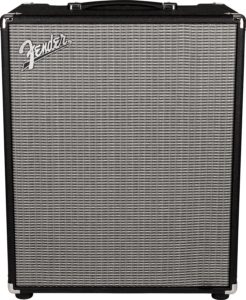
Picking an amp shouldn’t be too hard, but it is often significantly more difficult than it should be only because of the sheer number of choices available.
There are bass amps in all price brackets, but most working people starting in the under $500 category will extremely well suit the working musician.
Even under these constraints, there are probably thousands of amplifiers available to the working bassist.
Top 14 Best Bass Combo Amps Under $500:
| Image | Model | Price | Wattage | |
|---|---|---|---|---|
 | Fender Rumble 200 V3 | $400-500 | 200 | Check Price |
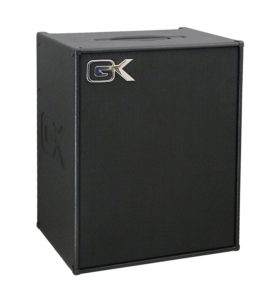 | Gallien-Krueger MB115-II | $400-500 | 200 | Check Price |
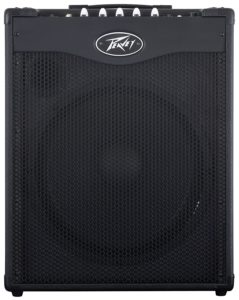 | Peavey Electronics Max 115 | $300-400 | 300 | Check Price |
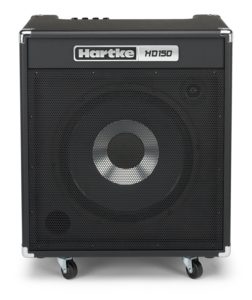 | Hartke HD150 | $300-400 | 150 | Check Price |
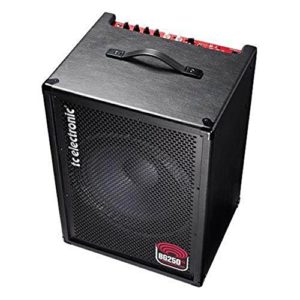 | TC Electronic BG250-115 | $300-400 | 250 | Check Price |
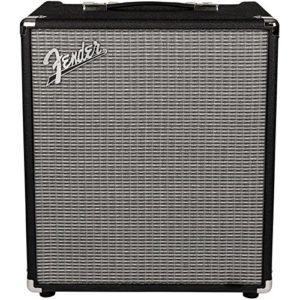 | Fender Rumble 100 V3 | $200-300 | 100 | Check Price |
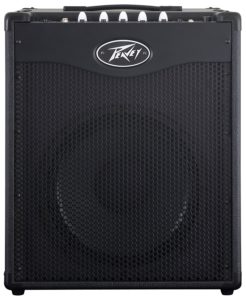 | Peavey Max 110 | $200-300 | 100 | Check Price |
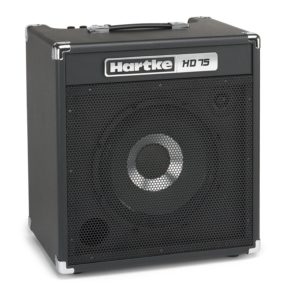 | Hartke HD75 | $200-300 | 75 | Check Price |
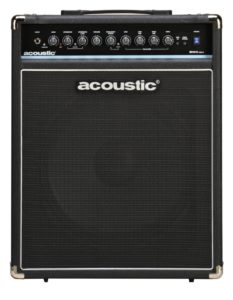 | Acoustic B100mkII | $100-200 | 100 | Check Price |
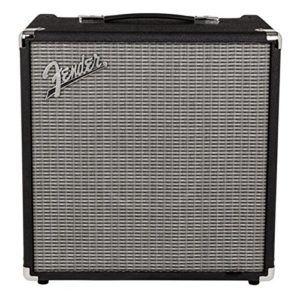 | Fender Rumble 40 V3 | $100-200 | 40 | Check Price |
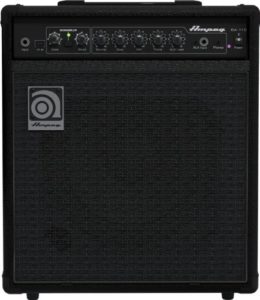 | Ampeg BA110V2 | $100-200 | 40 | Check Price |
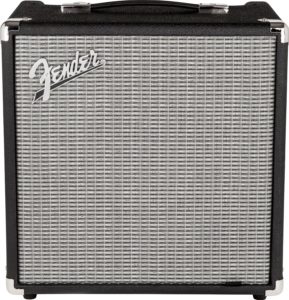 | Fender Rumble 25 V3 | $0-100 | 25 | Check Price |
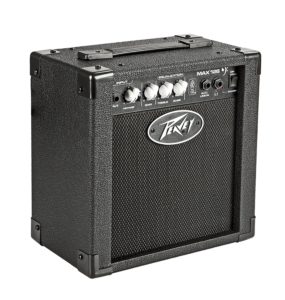 | Peavey Max 126 | $0-100 | 10 | Check Price |
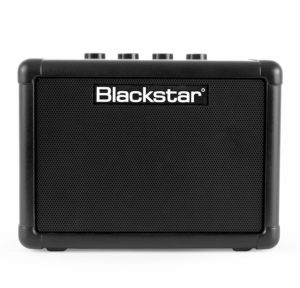 | Blackstar FLY3 | $0-100 | 3 | Check Price |
Best Bass Combo Amps Under $100
Fender Rumble v3 25 Watts
It is one of the smaller offerings in the lauded Rumble series. Little, as mentioned previously, is not always a bad thing. The tones on this thing are something special at this price.
https://sonoboom.com/best-practice-amps-metal/The major downfall of this particular amplifier is the size. Twenty-five watts is superbly limiting when it comes to gigging. With 25 watts, you will probably struggle to crank out enough volume on a more intense jazz session where there are no cranked guitars.
That aside, the amp has a headphone jack, a jack for playing mp3s, and a solid construction inside a highly portable body. If you are looking for a small amp to add to a collection for a very low price without sacrificing too much on sound, this might be one to consider.
Pros
- The sound is quite good
- Portable
- Well constructed
- Value is considerable
Cons
- Way too small for most gigs
Peavey Max 126
Somehow, Peavey has managed to pack some serious low bass into this tiny package. If you are looking for a small amp with a massive bass response range at an excellent price, this amp may be the point for you to stop reading this article and bust out your wallet.
The Peavey Max 126 series of amplifiers is a decent budget series that does one thing well: pack serious bass response in relatively small packages. Usually, it is the larger amps that have the very low-end bass rumble. That is not the case here. The Max series does not miss a beat in this budget range and can easily best any other amps on the list given here.
Otherwise, the amp has very basic features and does come from Peavey, featuring that reliable Peavey construction and reliability.
Much like the Fender Rumble, I think the best reason to purchase this is as a secondary amp. But that is not to say that it would not make a great first amp or budget amp for any aspiring bassist.
Pros
- Bass response
- Good price
- Portable
- Well constructed
Cons
- It might be too quiet for your gig
Blackstar Fly3
This amp is the smallest in this range and comes with a unique feature – the amp is battery-powered. Now, by having this differentiating feature, the amp becomes a highly specific tool.
In my opinion, only two people should buy this amp. If you live in an apartment where something minimal is the maximum you can utilize to the full potential, you should look at this amp. On the other hand, an experienced touring musician may find great value in this amplifier on the road because it is battery-powered.
The sound and power of this amp are a real achievement while maintaining the battery-powered form-factor. Many users claim that this amp is a best-in-class battery-powered amplifier. Not only that, but they claim that this is the best in range amplifier regardless of the power source.
The fact of the matter is this, in this price range, you are looking at amps built for practicing and not performance. If you understand that, you can make your money go quite far.
Pros
- Battery-powered
- Quite portable
- Small
- Decent sound
Cons
- Small
- Practice amp
Best Bass Combo Amps Under $200
As we move up the price range approaching our $500 cap, we will notice that one fundamental change happens: the amps get bigger. This is not always a huge benefit if we are looking for a practice amplifier or an amp for very small, intimate gigs that are easy to transport, like the Fender Rumble.
In this particular range, you will find solid combo amplifiers that add a little more weight in favor of, generally, more power.
Ampeg BA-110V2
While it may be a lesser-known amplifier company to some, Ampeg is not a company that you should overlook. This particular amplifier is a healthy 40 watt model with a house-built 10″ speaker.
Additionally, the design’s slight angle offers what Ampeg claims is “60 degrees’ sound reinforcement'”. Whether or not this means anything at a practical level is up to you.
If you are looking for a consistent, decent performer in a portable package with enough power for a small church-sized gig, this is an excellent amp to consider. You will not get great low end or any real versatility (you should not consider this amp for your pianos or keyboards).
The amp brings many excellent features, such as a 1/8″ headphone jack and good adjustment options, but other than that, it is effectively a bass amplifier, and that is all. If you are looking for an amp to set you apart from the crowd, this is not it.
Pros
- Good sound output
- Passable features
- Good size, decent portability
Cons
- Woofer will bottom out at any decent volume level
- Ampeg’s angle design is more gimmick than anything else
Fender Rumble 40
Bring most of the Rumble series’s excellent features, and the Rumble 40 watt model is a great option. However, it does nearly max out this budget range. But, for the price, you really could not do any better.
The Rumble 40 features a 1×10″ speaker set up along with headphones and XLR out (these features are standard on all Rumble amps). The Rumble 40 features good sound output for its size and comes in at a very comfortable-to-carry 18 pounds.
If you have $200 and want an amp that is both lightweight and will be entirely at home in a medium-sized room behind a fully electric band with decent low end, this may be the amp for you.
Pros
- Weight
- Weight to sound ratio
- Price is incredible for what you get
Cons
- Will get by in a larger gig, but not enough for more than 200 people
- The speaker leaves a little to be desired as far as sound quality
Acoustic B100mkII
If you are looking to pack in the most features at $200, look no further than the Acoustic B100mkII. This thing is a huge (for the price) amp that is decently well-respected within the community, with only a few complaints centered on longevity and reliability.
Acoustic, as you may know, makes great high-end amps, particularly for upright bass playing. This amp is less for jazz and aimed at a budget consumer wanting to get features over hugely admirable quality. That is not to say that this is a lousy amp. You should know that you are getting something that is slightly more quantity over quality.
You will notice the amp because it is the largest on the list so far by a long shot. At 100 watts, this thing will get cut through pretty much the loudest garage band out there. It also features a 4-band EQ and a few effects for you to fine-tune your sound. Along with that, it has a built-in acoustic pre-amp.
The largest complaints with this amplifier stem from the effects and longevity. Most reviewers state that the clean channel is a little less pure than desired. Maybe this is not a massive deal for your sound so that it could be a washout, but if you want a pristine clean channel, you might want to look elsewhere.
As far as the longevity goes, people say this thing has a lifespan of about three years. This could be long enough for you to graduate to a higher-end amp.
Pros
- Lots of features
- Lots of volume
- Still decently portable
Cons
- The clean channel has some dirt
- It has a shorter lifespan
Best Bass Combo Amps Under $300
As we move even higher, we are getting into the working musician amplifier. These amps will probably make decent stopping points if this is the maximum amount you are willing or able to spend on an amplifier.
You should find pretty consistent reliability, good design, decent volume output, and more features in this price range than in previous price ranges.
Fender Rumble v3 (100 watts)
Here we go with the 100 watt Rumble. As far as budget amps go, if you want something with very few frills reliable enough to get the job done day-in-and-day-out, this amp could be as far as you need to read.
Like the other Rumble series amplifiers that have made their way onto this list, the amp has 1/8″ outputs and aux inputs for your MP3 player. It also has dedicated overdrive circuitry and various tone tuning tools on the others.
This amplifier differentiates itself from its younger siblings by being large enough to keep up on most gigs you will ever play unless you play huge arenas. It does this while keeping the very pleasing tone qualities of the other Rumble amplifiers. It is also still lightweight enough to be portable for most gigs and most players.
The major complaints are that the amp does not feel to be built that well. Most reviewers state that the amp looks and feels budget.
Pros
- Great sound
- Good features
- Serious volume
- Portable
Cons
- Build quality is lacking
- The high end of this price range for a more bare-bones amplifier
Peavey Max Bass 110
If I had to nickname all the amplifiers on this list, I would call this one the “little engine that could.” Peavey, in my opinion, is an incredibly overlooked company in most price ranges. Peavey had their heyday in the 70s and 80s, and I believe Fender and Marshall have largely overshadowed them since then. I think this has to do with their reputation for shoddy build quality in newer models.
Fortunately, the Max Bass 110 is an excellent amplifier at a great price! Peavey positions this amp as a “little but big” amplifier, and I think that is a fair representation. The Max Bass 110 does not look like a 100-watt amplifier, but it sure packs that 100-watt punch.
What else does it pack? A few inputs and outputs and some special tube modeling circuitry and the necessary bass, mid, treble modification knobs, and some other adjustments.
The amp is heavy, though – much, much heavier than the Rumble at 35 pounds. Now, is this prohibitively heavy? That is up to you. I am also not sure that Peavey’s tube modeling circuitry is anything but snake oil.
From what I know are facts about this amp, the price is excellent, and so is the sound.
Pros
- Reliable, unlike some other modern Peavey amps
- Big sound, smaller size
- Good, heavy build
Cons
- Heavy
- Some features are more snake oil than anything else
Hartke HD75
This particular amp is the smaller of the three amps I am listing in this price range, but I do not think that means you should not consider what it has to offer. For example, if you place any stock in online reviews, this particular amplifier frequently gets 5-star reviews on Amazon.
Hartke has created an exciting combo amp here for an attractive price. It brings most of the necessary features and comes with a 7-band EQ and effects loop for more experimental tone adjustments. It also has excellent sound quality and a very respectable, tight low-end.
Additionally, the 100-watt size of the previous two amps in this budget may be off-putting for some people. Cutting 25 watts worth of weight and size gives you a very pleasantly portable HD75.
Pros
- Great sound
- Compromise size
- Good range of features
- Price
Cons
- 75 watts is not 100 watts
- Hartke is a lesser-known brand
Best Bass Combo Amps Under $400
In this price range, the biggest change from the previous is the amps’ size and power.
Peavey Max Bass 115
Much like the Max Bass 110, this is a reliable amp. This model makes a pretty significant jump in size from the last up to 300 watts. That is probably the maximum size amp you would ever need. But does it have the sound?
This amp’s $350 price tag gets you a 3-band EQ, a “psychoacoustic” speaker enhancement (more snake oil?), the renewed Peavey build quality, a chromatic tuner built-in, and the requisite aux inputs and outputs.
It also has buttons for “punch”, “mid-shift”, and “bright”. I think these designations will only mean much to the experienced Peavey user because they seem to me to be Peavey designations more than anything else.
How does the amp sound? Good, and that is all I can say. It is not an incredible-sounding amp. I think it sounds like the Peaveys of old. If that is your thing, plug in your Rickenbacher and get those windows shaking.
Pros
- Loud
- has necessary features for most bass players
Cons
- “Psychoacoustic” does not really seem to mean anything
- Some people claim it is quieter than other 300 watt amps
Hartke HD150
Much like its younger brother, the HD150 makes all kinds of fascinating, highly beneficial decisions to result in a tremendous bare-bones amplifier that sounds just great for the price.
The HD150 brings all of its younger brother’s features in a slightly larger package, meaning you get more volume for your money here. In my opinion, 150 watts is pretty much the maximum necessary size for a combo amp.
If you are going any more prominent, you may want to consider moving to a separate amp and speaker system. Or, the house sound system and engineer will have other ideas like putting you through the system.
The HD150 brings 150 watts of output, a 15″ speaker and a 2″ ceramic tweeter, a 7-band EQ, and the requisite inputs and outputs. That is pretty much everything you need and very little that you do not. It also brings an XLR output for wiring up to a PA that you may or may not use, but it is a nice thing to have when you need it.
With the HD150, you are getting dangerously close to sounding like a professional rig. But, the sound quality of the rig is limited by the 1×10″ speaker set up.
Pros
- Good design
- Great sound
- Has all of the necessary outputs and inputs
Cons
- 1×10″ and not a 2×10″
TC Electronic BG250-115 MKII
It is a 250-watt monster. If you are looking for an amplifier trying to do something unique, look no further.
The BG250-115 is a decently sized, decent-sounding amplifier with one unique feature. It features two “tone print” slots, which allow you to change your effect on the fly in conjunction with an iPhone app and outboard pedals.
The TonePrints are custom-created effects that you can change using the app or downloading them from the TC Electronic website. Supposedly, they are made by the actual artist, who the effect is modeled after.
Besides the TonePrint feature, the app has a built-in tuner that can handle up to 6 strings, which is very handy. It also comes with all the other inputs and outputs you should need.
As far as TonePrint goes, I am not sure that I was impressed enough by what I saw to consider this a feature that makes this amp rocket to the top of my list. I think that some effects were quite sound and did a reasonably good job of getting at the sounds they were supposed to. Others seemed like filler.
Overall? If you want a 250-watt amp with a unique and slightly experimental effects system, this amp is one to watch.
Pros
- TonePrint system is interesting
- Loud
- A good amount of power
- On the lighter side
Cons
- TonePrint is a little bit unproven
- TonePrint effects leave a bit to be desired
- Pretty big for most players
Best Bass Combo Amps Under $500
Here we sit at the very top of the budget range we are considering. $500 is pretty much basic professional amp territory. I am not saying that you will get bass rigs comparable to your favorite pro’s bass rig, but you can probably sound pretty darn close given the quality and build we should expect in this price range.
Fender Rumble v3 200
Unfortunately, Fender made a strange decision here. In my opinion, the 200 is the weakest entry for one fundamental reason: 200 watts is not enough to keep up with some amps lower down on this list.
The problem is this. Paying $500 for an amp means you can reasonably expect an amp to keep up with the low end at all volume levels. Unfortunately, I do not think that the v3 200 does this. For certain low B strings, the amp is unacceptably muddy at high volumes.
The worst part about it is this: at about $100 more, and you can get the 500-watt model that alleviates this issue by having a bit more power. I think Fender should have placed the 500-watt model at this price point, but that is just me.
As far as the rest of the amp goes, it is a Rumble, so it is quite good.
Pros
- Great Fender Rumble sound
- Sturdy
Cons
- Amp cannot keep up with himself
- Fender makes some strange pricing decisions that make you wish this amp did not exist
Gallien-Krueger MB115-II
Gallien-Krueger, a top name in bass amplification, makes its first and only appearance on this list. Why? I am not sure if you could sound better in this price range than you will on this amp.
This MicroBass offering is small (only weight about 35 lbs) and packs plenty of punch. Additionally, it has a 15″ Paragon speaker that sings. The only amps that come close to sounding as good as this one on this list are the Fender Rumble series.
What this amp skimps on are features like effects. There are no onboard effects like the BG250 from TC Electronic, yet this amp usually runs $150 more. If you are looking for integrated effects, this particular amplifier will not suit you.
If you are looking for something with the right mix of power, portability, and sound, the MB115-II may be the perfect amp for you.
Pros
- Sound is great
- Lightweight yet powerful
- Speaker is solid
Cons
- Barebones, amps in lower price brackets have more features
How to Pick the Best Bass Combo Amp Under $500
Like the electric guitar, the amplifier a bassist chooses can lend a lot to their signature sound and look. When purchasing an amp, you want to be aware of what you are buying and the effects that decision will have.
Are you an acoustic bassist? It would be best to choose an amp that will render the upright bass’s sound most favorably. Are you going to use a lot of effects? Maybe you should think about what effects you would like to have built into the amp. Are you looking for the best, all-around amplifier under $500?
You have a lot of decisions to make!
Solid-state or Tube?
In this price category, I cannot recommend considering a tube amp. Tube amps typically offer a much more musical overdrive. Solid-state amplifiers can play loud and require no warm-up time, but the overdrive in the higher volume settings is not musical than a tube amp.
Solid-state amps avoid their overdrive issues by incorporating enough overhead into the design to prevent hitting those volume levels. Tube amps are typically the Cadillac amplifiers on the market. Some tubes can cost $100 or $200, soaking up the majority of your budget.
If you still want a tube amp, perhaps looking at a small, low wattage option in the upper end of this price range will do well for you.
Combo or Amp/Head?
This decision is all about whether or not you need a high-gain unit. Are you playing smaller clubs or studios? High gain may not be the route you should take. If, however, you plan on playing large venues, then you may consider a separate amp and head to make sure you can push the gain to your desired levels.
Modeling?
There are several ways to utilize different modeling technologies when it comes time to perform or record. I would warn you that modeling amplifiers are not a substitute for the real thing for many players. There are some amps in this price range that have some moderate modeling capabilities built-in. But, it is up to you to decide whether or not modeling is the decision for you.
Modeling utilizes digital technologies to “recreate” certain classic amplifier sounds. It can also recreate specific sounds from specific studios nearly down to the particular day. I have recorded in situations where modeling was used and was happy with the results. But, it certainly is not a “natural” sound, although the technology is growing enough to where someday it might be.
Speaker Size
I have met bass players who have tended to have a thing about big amps, even small gigs. From the drummer’s perspective, I will tell you that bigger is not always better. Sure, larger speaks will put out more low-end rumble, but what does that rumble do for your music?
Like most things with amplifiers, it is up to you to consider whether or not the larger speaker is better for you. One point to note, a smaller speaker will be less to carry, weight-wise.
Channels
Like guitarists, bass players tend to enjoy having the luxury of multiple channel capacity on their amplifiers. Why? That allows you to queue up a couple of different sounds in your amplifier and change them on the fly with (usually) a flip of a switch.
Do I Need a Practice Amp and a Gig Amp?
I would advise you to spend more on one amp in this price range rather than trying to split your funds across two amplifiers. Most bass players desire to have a single high-quality amp that is more versatile. Like most things, though, this is your money we are talking about, and if you want an amp for home and an amp for the road, I will not advise against that.
Suppose you are looking for a practicing solution, some amps on this list feature 1/4″ jacks for headphones. That’s a tremendous advantage for private practice sessions.
Shortlist of things to look out for
- Speaker size: Is the speaker the size that you want?
- Inputs and outputs: depending on your application, you might need to check and make sure that your amp can support
- Power: does the wattage match your requirements?
- Portability: If you are playing on going the one amp route and don’t want to kill your back, you should consider your amplifier’s portability before buying.
- Channels: Does the amp have all the channels you want?
Getting an amp in this price range with all of your features might be a little bit more difficult due to the various constraints a sub $500 price point puts on manufacturers. It can be done with very few sacrifices if you know what it is you want and are willing to stick to these few considerations on your way there.
The Best Combo Amp Under $500: Our Verdict
The fundamental consideration you should make is your budget. After that, you should look at the amps list I have given you here and my rundown of the various topics to consider when buying a bass amplifier.
If you want features, understand that you will usually sacrifice a tiny bit of sound quality in this price range – whether that is low-end or overall quality – in favor of getting those extra features.
On the other hand, bare-bones sound quality is also easily achievable in this price range if you use your resources wisely.
Furthermore, consider whether purchasing an amp geared towards practicing means that your amplifier is as versatile as you need to be. Trust me; there is nothing worse than showing up to a gig knowing that you will rely on using their PA to put out enough volume only to find that it is broken or stolen or otherwise out of commission.
Buying an amp, in other words, is as personal as choosing a bass finish. Think about what you want and then decide which amp fits your budget and then your other requirements the best.